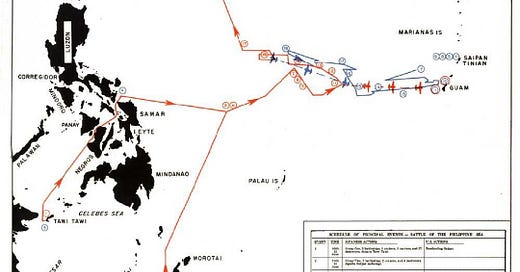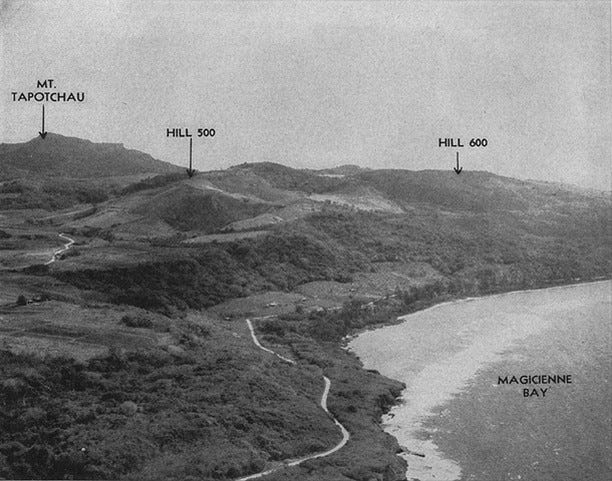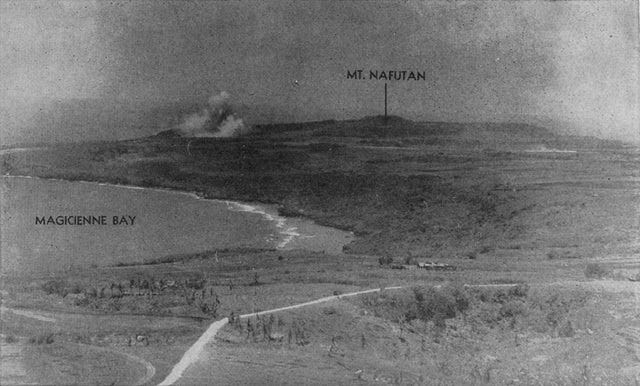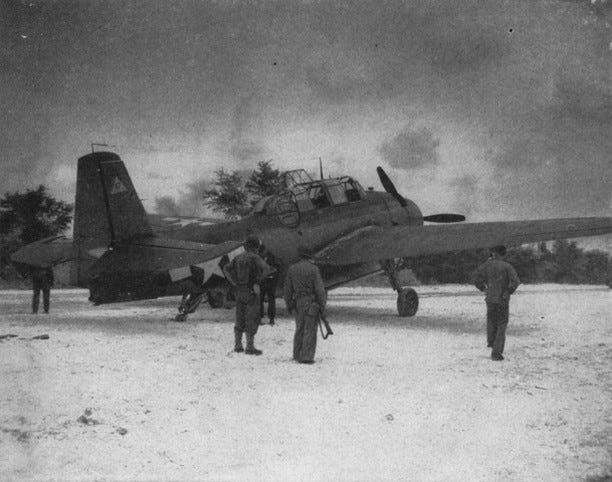While the troops were advancing on the 19th and 20th, the landing fleet that Admiral Spruance had withdrawn on D-Day to intercept the Japanese Fleet that took to sea in response to the landing at Saipan. This became known as the Battle of the Phillippine Sea. It was the largest naval battle in history.
The air battle was extremely lopsided, with experienced American pilots in newer, faster planes outmatching the Japanese pilots rushed through flight school. Of 545 Japanese planes seen by U. S. pilots, 402 were destroyed. The US lost 26 planes.This legendary battle bacame known as the Marianas Turkey Shoot.
Some of the air battle occurred over Guam, and from the ground the Japanese occupiers could tell what was happening. Corporal Tai Suzuki, on Guam, wrote "I hear that there are a number of pilots who are only 17 or 18! ! ! . . . I heard that the enemy has 500 ships and 7,500 planes in the Central Pacific Area and that the climax of this battle will come in about a week. I am worried as no word has been received since the landings were made on Saipan."
In the 2d Division, were the hinges of the swinging gate. Outside of Garapan, they found an abandoned Japanese tank in operating condition with full fuel tanks and no defensive fortifications within 500 yards of the front. The Japanese had clearly regrouped into the jungle. The 8th Marines' were able to advance all the way to the O-4 line, finally capturing Kannat Tabla and the central part of Lao Lao bay.
Taking Hill 500 was the harshest fighting on June 20th, with the 25th Marines taking 26 casualties on one approach before calling in tank support. The Japanese held their fire and then ambushed when they advanced. Progress was cave-by-cave, needing flamethrower squads to 'cauterize' the entrances. Last month, a friend on a hike through this area found an intact but rusty grenade left over from this conflict.
The Army's 27th Division struggled to take Nafutan Point, the peninsula that juts out to the southeast of Saipan. The Japanese had managed to move much of its artillery and defensive abilities into this corner of the island and root in for a defensive stand that required General Smith to recall the Guam invasion force to come and support the Army's efforts.
Though the lines were not moving as fast as had been hoped, the seized territory was quickly being utilized to support the broader efforts. The first American plane to land at As Lito airfield was on June 20th, bringing a wounded Naval aviator for medical attention. CNMI









